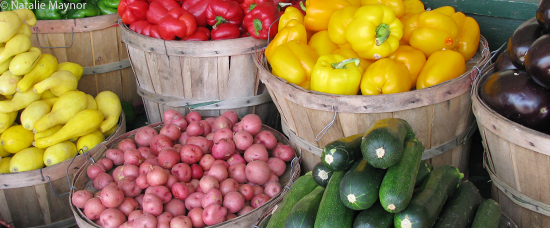
In May 2016, CEC and its partners (the Foodbank of Santa Barbara County, the Orfalea Foundation, and the Santa Barbara Foundation) published the Santa Barbara County Food Action Plan, a community-driven strategic plan that assesses and provides recommendations for how we grow, distribute, consume, and dispose of food.
From the outset, the goal was to spur tangible change in our region. Holding true to this intention, over the past 18 months we have worked with partners to directly engage over 550 community members and impact countless more through a variety of concrete actions:
GREENER OPERATIONS
- Isla Vista Food Cooperative installed 100 solar panels that will supply about ⅓ of the Coop’s electricity needs, cut their energy bill by 15%, reduce greenhouse gas emissions and strengthen resilience.
GREENER HABITATS
- The City of Santa Barbara recently committed to becoming a Bee Friendly City, which includes creating sustainable habitats for these pollinators.
FOOD WASTE
- Multiple agencies are working together to prevent food waste. CEC held its second Food Waste Roundtable to address the complexities of a system in which tons of untouched food and usable food scraps are sent to the landfill, while a substantial portion of the population is unsure where their next meal is coming from. Bringing together this diverse array of stakeholders from all sectors in our community led to us pursue food waste recovery pilots in Santa Barbara and Santa Ynez.
CARBON FARMING
- Ranchers and farmers are using regenerative agriculture practices to improve their soils and potentially help reverse climate change. CEC and several partners are working with the Ted Chamberlin Ranch on a carbon farming pilot project, and also helping inform policy through presentations at national conventions and local meetings. This work is receiving a lot of attention on a local, regional, and state level – including over 75 individuals visiting the ranch since February. In the future we hope to scale up at other ranches around the county.
FOOD ACCESS & COMMUNITY HEALTH
- The Blue Sky Rural Summit brought over 100 diverse stakeholders from business, government, academia, philanthropy and general community together, resulting in funding for the Blue Sky Center to begin planning its next moves. It is now seeking funds to put the plans in action, which include establishing vocational high school workshops, adult educational programming, and a cold storage facility to makes food drop off possible for one the most impoverished communities in Santa Barbara County.
- The new Lompoc Community Access Center provides a multipurpose hub for a wide variety of free programs, classes, and business incubation. Approximately 70 people attend its programs each week, including after-school cooking and nutrition classes.
- Santa Barbara County’s higher education institutions – from UCSB to Santa Barbara City College to Allan Hancock College – convened to share best practices for addressing food systems issues on their campuses. With support from the Food Action Plan team, UCSB is considering integrating their mobile demonstration kitchens into the wider community, Santa Barbara City College is establishing an on-campus food bank for its low-income students, and Allan Hancock College is developing a peer-to-peer nutrition literacy network.
LOCALLY GROWN
- Edible SB Magazine’s summer issue included a directory of local farms, community gardens, and farmer’s markets with resources for seasonal eating, visiting local farms, and attending local events. With 19,000 copies in circulation, this is a big step forward in educating consumers about the vibrancy of the County’s local food system.
